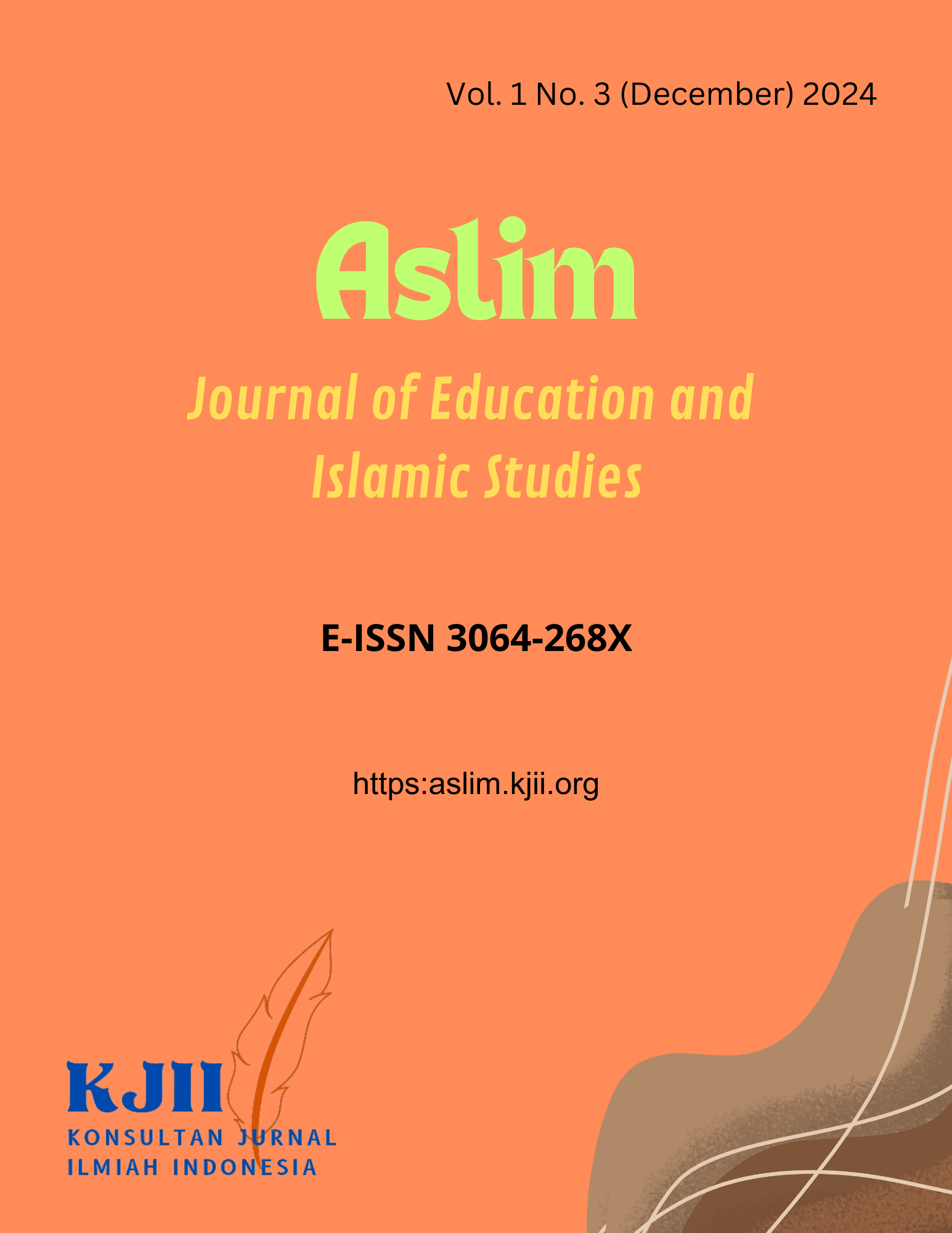Review of the Arabic Language Curriculum at Al Mawaddah Ciganjur Islamic Senior High School
Keywords:
Curriculum, Arabic Language, Merdeka Curriculum, LearningAbstract
The curriculum continuously evolves over time, often aligning with the prevailing government policies. Currently, the Merdeka Curriculum has been introduced as the latest educational framework. This study aims to examine the Arabic language curriculum at Madrasah Aliyah Al-Mawaddah Ciganjur and evaluate the implementation of the Merdeka Curriculum in Arabic language learning at the institution. A descriptive qualitative approach was employed, with data collection methods including observation, documentation, and document analysis. Data analysis followed an interactive model consisting of data collection, data presentation, data reduction, and conclusion drawing. The findings reveal that students' ability to respond to questions regarding interrogative sentences in Arabic varies significantly. Some students possess prior learning experiences in Islamic boarding schools (pesantren) and a basic understanding of Arabic, while others lack such backgrounds. The syllabus incorporates active discussion sessions between teachers and students, ensuring that the learning process is not solely dependent on written materials. Learning evaluations include text analysis tasks focusing on interrogative sentences in Arabic. However, the implementation of the Merdeka Curriculum at Madrasah Aliyah Al-Mawaddah Ciganjur faces several challenges, particularly in teacher competency, availability of teaching materials, teaching methods, and learning media.
References
Achmad, G. H., Ratnasari, D., Amin, A., Yuliani, E., & Liandara, N. (2022). Penilaian Autentik pada Kurikulum Merdeka Belajar dalam Pembelajaran Pendidikan Agama Islam di Sekolah Dasar. Edukatif: Jurnal Ilmu Pendidikan, 4(4), 5685–5699. https://doi.org/10.31004/edukatif.v4i4.3280
Ayu Sekarsari, Annisa Eka Putri Aullia, Nailah Kaltsum, Rofiqo Hasanah Saragih, & Rosita Dongoran. (2024). Arabic Phonological Interference: Contrastive Analysis of Arabic Phonemes Against Indonesian Phonemes in Non-Arabic Literature Department Students of Al-Azhar University. Aslama: Journal of Islamic Studies, 1(3), 82–92. Retrieved from https://aslama.kjii.org/index.php/i/article/view/11
Damanik, N. Z. S., & Nasution, S. (2024). Model Pembelajaran Tebak Kata Untuk Menghafal Mufrodat Bahasa Arab Siswa MAN Pematang Siantar. Journal Islamic Pedagogia, 4(2), 131–140. https://doi.org/10.31943/pedagogia.v4i2.117
Hasibuan, A. T., Batubara, S. A., Khairani, M., & Siagian, E. A. (2022). Telaah Kurikulum Dari Masa Ke Masa: Studi Evaluasi. Jurnal Pendidikan Dan Konseling (JPDK), 5(3), 313–319. https://doi.org/10.31004/jpdk.v5i3.15613
Ismi Khairani, Ainur Rahma, Desi Susanti, Farhatul Fadhilah, & Sahkholid Nasution. (2023). The Role of Calligraphy in Increasing the Maharah Kitabah. Quality : Journal Of Education, Arabic And Islamic Studies, 1(2), 157–168. https://doi.org/10.58355/qwt.v1i2.34
Kaukab, M. E. (2021). Penilaian Autentik Dalam Pembelajaran Bahasa Arab. NIVEDANA: Jurnal Komunikasi Dan Bahasa, 2(1), 60–75. https://doi.org/10.53565/nivedana.v2i1.282
Rohman, M. (2013). Pembelajaran Bahasa Arab di Madrasah Aliyah dalam Perspektif Kurikulum 2013 (Sebuah Tinjauan Yuridis). An-Nabighoh, 20(02), 222–246.
Supardi. (2015). Penilaian Autentik. (1st ed.). Raja Grafindo.





